In reading the literature available on Business Architecture it strikes me that most of these mention Business Architecture in the context of the entire organisation or ensuring IT alignment to organisational strategy. While these are true statements, Business Architecture provides a lot more. Each function or capability in an organisation can benefit from the application of business architecture. I typically explain this approach using a General Systems Theory lens.
With General Systems Theory, we can view any organisation in the following way – it has an Input, a Process, and an Output. In addition each organisation has its Raison d’être (reason for existence). Efficiency is a factor of how well the Inputs are converted to Outputs and Effectiveness is the degree to which the organisation achieves its reason for existence. To complete the picture we have the Context or environment in which the organisation exists.
This very simplistic view of an organisation can be represented through business architecture in a multitude of different models and frameworks. We use the motivation model for the Raison d’être, environmental analysis models for the Context, capability models to depict part of the Process area, etc. Stylistically though, the same pattern applicable at the organisation-wide level is also applicable to individual components in the organisation. These organisational components could be any of the typical functions (for example HR, Finance, Commercial); it could be a Project, a Service, or even a Delivery Channel. To provide further weight to the description I use a fern leaf fractal as an analogy. With a fern leaf fractal, as developed by British mathematician Michael Barnsley1, when you “zoom” into a leaf segment, the pattern of the leaf is repeated. Any subsequent “zooms” reveals the same pattern. The fern leaf is one of the basic examples of self-similar sets. In a self-similar set a part of the whole has the same pattern as the whole. It is a mathematically generated pattern that is reproducible at any magnification or reduction2.
As Business Architects we can therefore assist any part of the organisation and we are not limited to just IT or an organisation-wide view. Each component, whether it is a whole organisation or a specific department or function, can be described as having an Input, a Process, and an Output. Each of these component parts has its own Raison d’être and Efficiency & Effectiveness measures. Furthermore, it exists in a Context with environmental influencers, albeit at a potentially less complex level and mostly internal to the organisation. This also solves the problem that many business architects have when trying to convince the executive of the benefit that business architecture can provide. Yes, we can even describe Business Architecture using this approach and I will discuss its Raison d’être in a future post.
Using such a General System Theory fractal pattern it allows us to view any component or function of the organisation using similar techniques and over time we can build out a complete picture of the organisation.
Once we have modelled and understood a particular component or function we can quickly determine where the problem areas are:
- Is its Raison d’être in alignment with the other contexts?
- How efficient is the particular component?
- Is it achieving its goals (effectiveness)?
- What changes are dictated by the environment (Context)?
Business Architecture spans this entire curve.
Therefore the higher the mandate, the higher the value.
In summary, depending on where you operate on the Mandate Curve you can apply the business architecture principles relevant to that context and still deliver benefits to the organisation and ensure that it is strategically positioned for success.
We value your contributions so please feel free to do so in the comment section below.
- Michael Fielding Barnsley. Fractals Everywhere: The First Course in Deterministic Fractal Geometry.
- Description of the Barnsley Fern















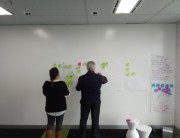












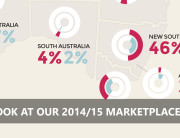





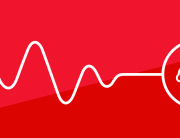









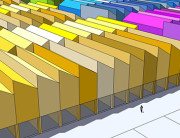



























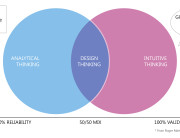

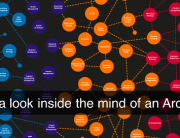



The issue with business architecture is that it is given to us (business analysts) to do, and for one reason or another, we are rarely seen as an authority. Generally you get thrown in to a project as a BA, and all the business and capability modelling that needs to be done, you have to do by stealth. Nobody sees any value in it because all they care about is the tool. Project managers believe they are experts in everything, and see no value in business information. They also believe this is the role of change management, who simply want the output of business architecture.
Really like the use of “Existence reason, Efficient & Effective in Context” as being a very powerful tool to work with the various stakeholders. This can be easily related to most situations, and has the ability to move along the maturity curve as well as enterprise size, without losing its relevance.
The EA community has a challenge, It is necessary to change the pre-conceptions of many business executive. They focus the EA subject as a IT issue rather than Strategic/Business issue.
I founded an organization that is now 31 people in 7 years. The business architecture is and has been the best indicator of sustainable scalability. We experienced heaviest growth the past 2 years after leaving the tradtional hierarchical order to a fractal design. Our vision is simply to be a relevant design firm. Like the post states, relevancy is sought by every function, team, individual, and for the organization.
Yes. BA is as relevant for the recruitment team in HR as a it is for the whole organisation. But this view does rather expose the awkwardness of the phrase “business architecture”. I prefer the term “operating model” partly because it is then clear that the recruitment team need an operating model as does the whole of HR as does the larger organisation.
Quite often Business Architecture or the use of it gets dismissed on the basis that it is for Fortune 500 companies or people say: “we are too small for this”. A business at its simplest level can benefit as you say. What holds true, holds true no matter the size. I am an advocate for SMEs making use of Business Architecture, its really not that painful!!
Johan
Interesting Systems Thinking perspective. When combined with the Design Thinking approach, I believe, adds another dimension in terms of how we can now design the organisation based on how we know the system works (or not).
Christine